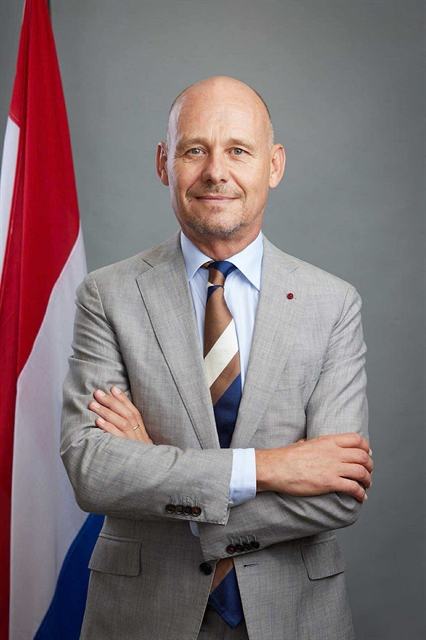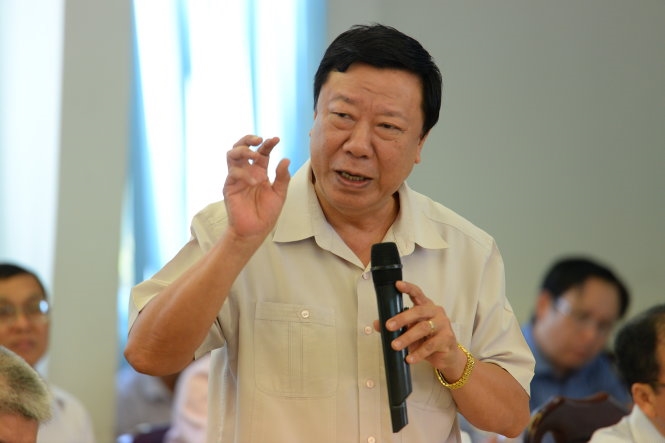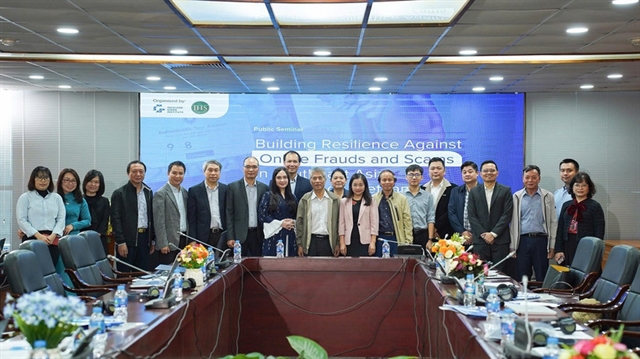 Opinion
Opinion

Nguyễn Trọng Hòa, former director of the HCM City Institute for Research and Development, speaks to the newspaper Tuổi Trẻ (Youth) about the city’s plans.
 |
Nguyễn Trọng Hòa, former director of the HCM City Institute for Research and Development, speaks to the newspaper Tuổi Trẻ (Youth) about the city’s plans.
How do you rank HCM City against other regional cities?
If we are talking about area, then HCM City is three times bigger than Singapore, and almost the same size as Bangkok. However, its population is smaller than that of Bangkok.
In the near future, when the Thủ Thiêm urban area is completed, HCM City will be on par with other big cities in the region in terms of economic development and social security.
However, there remain some weaknesses in urban planning and management, particularly in residential development. Generally speaking, housing development is still fragmented – there are no specific plans on where to build multi-storey buildings or low-level buildings. Poor residential planning has seriously affected the visual appeal of the city and created difficulties in infrastructure, especially regarding travel within the city.
Can you please elaborate further on the city’s development weaknesses?
In my opinion, traffic congestion and flash flooding are the biggest problems for the city.
In addition, in the context of climate change, the current administration’s model has exposed many weaknesses, areas that fail to meet the city’s need for development and management in the long run. Here I just want to suggest three scenarios for the city authorities to consider.
Scenario 1: No change in the city’s current status.
Scenario 2: Conduct new surveys of the land, population, topography, geology, and the socio-economic characteristics of each region. Then use these to come up with a new plan for each district or sub-region.
Scenario 3: Use the new urban administration model that has been approved by the HCM City People’s Committee. With this model, the city will have four satellite cities revolving around a central area comprising 13 districts. They will be governed by two levels of administration: the centrally-run municipal government and locally-run grassroots administrations, instead of the present three levels.
Of the three scenarios, I think the third is the best, as it helps the city stabilise its development and ensures sustainability.
If the new urban administration model is approved by the National Assembly, what are the next steps that city authorities will need to take?
The first thing they will have to do is formulate a detailed plan for urban development. Of course, this urban development plan must be kept separate from the socio-economic development plan.
An urban development plan is just one of many components within a city’s socio-economic development plan. Such a plan must have a far-reaching vision that is attainable.
Under the new urban administration model, HCM City will have four cities plus a 13-district central area. The administrative apparatus of each district will be called an Administrative Committee, which would be headed by a District Administrative Committee Chairman or District Chief. Meanwhile, each satellite city would be governed by a City People’s Committee headed by a Chairman or Mayor.
Of course, after getting approval from the Government and the National Assembly, HCM City can then prepare an organisational plan, as well as a human resources plan that specifies the powers, functions and duties of each level of government under the new model.
HCM City’s new urban administration project was launched in 2007. The objective of the project was to build a new administrative apparatus that was professional, simplified and effective. — VNS.




